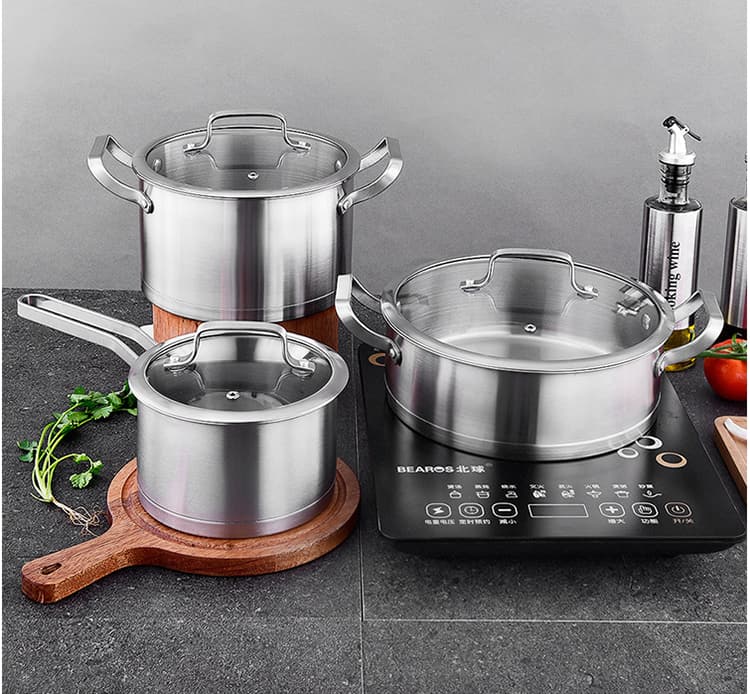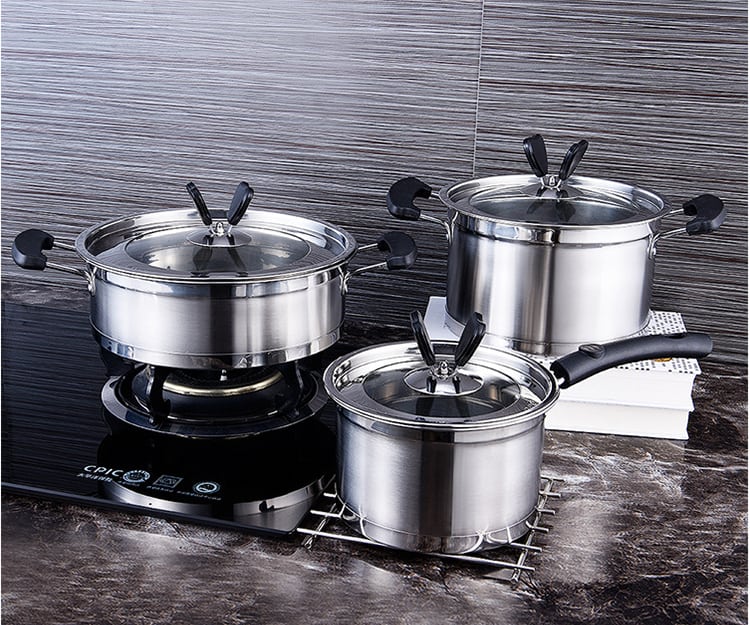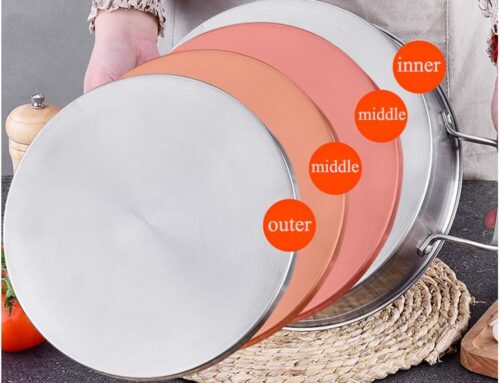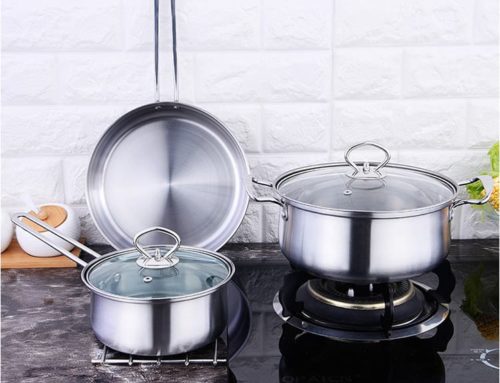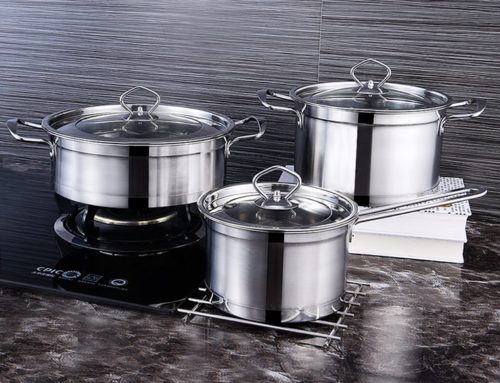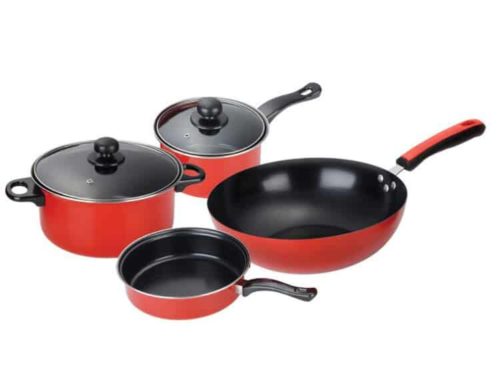How Does the Capacity of the Soup Kettle Affect Its Suitability for Various Kitchen Sizes and Demands?
The capacity of a soup kettle, measured in liters, is a foundational factor that determines its suitability for different kitchen environments, from small cafes to large-scale catering operations. This key specification directly influences batch cooking efficiency, space utilization, energy consumption, and overall workflow. For instance, an electric soup pot with a capacity that aligns poorly with daily demand can lead to frequent refills, wasted energy, or underutilized equipment.
AT Cooker, a trusted provider of commercial cooking solutions (via range-pot-stock-pot-burner), offers a diverse range of options—from compact 15L electric soup pan models to industrial 400L commercial soup kettle units—each engineered to meet specific volume needs. Understanding how capacity interacts with kitchen size and demand is essential for selecting equipment that balances performance, cost, and practicality. Below, we explore these dynamics in detail, with real-world applications and product-specific insights to guide your decision.
1. Large-Capacity Electric Soup Pots (40-100L) for High-Volume Kitchens
Large-capacity electric soup pot models, typically ranging from 40L to 100L, are specifically designed to meet the demands of high-volume foodservice operations. These include banquet halls hosting hundreds of guests, hospital cafeterias serving multiple meal periods, and large restaurants with extensive soup menus. The primary advantage of these kettles is their ability to produce massive batches—often enough to serve 200+ customers in a single cooking cycle—thereby reducing the need for constant monitoring and refilling.
AT Cooker’s 400L Large Range Pot, a flagship model in this category, operates at 20–30KW and can prepare up to 400 portions of soup in one batch. This is particularly valuable for venues like convention centers, where sudden spikes in demand are common. A banquet hall manager in Las Vegas shared, “Before upgrading to the 400L kettle, we had three 50L pots running simultaneously during events. Now, one batch covers our entire guest list, freeing up staff to focus on other tasks and reducing kitchen congestion by 60%.”
These large kettles often integrate advanced features to handle their size, such as jacketed steam kettle technology for uniform heating, automatic temperature controls to prevent overcooking, and reinforced handles for safe maneuvering. Their robust construction also ensures durability under continuous use, with many models lasting 7–10 years in commercial settings.
Compact electric soup pan models, with capacities ranging from 10L to 20L, are engineered for kitchens where space is at a premium. This includes food trucks, small cafes, convenience stores, and kiosks—environments where counter space may be limited to 2–3 square feet and daily soup output ranges from 50 to 100 portions.
These smaller kettles prioritize portability and efficiency, often weighing 30–45 lbs and fitting seamlessly on standard countertops. AT Cooker’s 15L electric soup pan, for example, operates at 5KW and can prepare 50 portions of soup in under 30 minutes, making it ideal for lunch rushes in tight quarters. A food truck operator in Austin explained, “My kitchen is barely 4 feet wide, so a large kettle was out of the question. The 15L pan fits next to my grill, and I can make multiple batches throughout the day without sacrificing space for other equipment.”
Despite their smaller size, these pans retain key features like adjustable temperature controls (140–212°F) and easy-to-clean stainless steel interiors. They also work with standard 240V outlets, eliminating the need for expensive electrical upgrades—a significant advantage for mobile or small-scale operations.
- Space Efficiency: Designed to occupy 1–2 square feet, making them suitable for countertops in tiny kitchens.
- Energy Flexibility: Operate on 3–5KW power, compatible with standard commercial electrical systems.
- Portability: Lightweight construction allows for easy relocation, ideal for pop-up events or mobile kitchens.
- Batch Size: Perfect for 50–100 daily portions, balancing freshness with minimal waste.
| Capacity Range | AT Cooker Model | Batch Output (Portions) | Power Consumption | Ideal Kitchen Type | Space Requirement | Key Features |
|---|---|---|---|---|---|---|
| 10–20L (Compact) | 15L Electric Soup Pan | 50–100 | 3–5KW | Food trucks, small cafes, kiosks | 1–2 sq ft (countertop) | Standard 240V, lightweight, portable |
| 40–100L (Mid-Volume) | 98L Commercial Soup Boiler | 200–300 | 8–15KW | Mid-sized restaurants, schools, hotels | 3–4 sq ft (floor/countertop) | Adjustable temp, easy-clean interior |
| 100–400L (High-Volume) | 400L Large Range Pot | 400–1200 | 20–30KW | Banquet halls, hospitals, large caterers | 5–8 sq ft (floor) | Jacketed steam, auto controls, reinforced build |
3. Capacity & Batch Cooking for Peak Demand
The relationship between kettle capacity and batch cooking efficiency becomes most apparent during peak demand periods—lunch rushes, dinner services, or event catering. Higher capacity directly reduces the number of batches required to meet customer needs, minimizing downtime and labor costs.
For example, a restaurant serving 200 customers daily would need:
- 4 batches with a 50L kettle (each batch taking 20 minutes, totaling 80 minutes of cooking time).
- 2 batches with a 100L kettle (30 minutes total cooking time).
- 1 batch with a 200L kettle (15 minutes total cooking time).
This difference translates to significant time savings, especially in fast-paced environments.
AT Cooker’s 196L Electric Stock Pot Range (featuring two 98L pots) is designed to bridge mid-volume and high-volume needs. A diner in Chicago implemented this model and reported, “Our 7 PM rush used to create a bottleneck because we were constantly refilling our 50L pot. With the 196L range, we prep one large batch at 5 PM and have enough soup to last through closing, reducing cook time by 75% and eliminating customer wait times for soup.”
Additionally, larger batches help maintain consistent flavor and texture, as ingredients cook uniformly over longer periods. This is particularly important for recipes like stews or broths, where flavor development relies on steady simmering.
— Lisa, Diner Owner (Chicago, IL)
50L Pot
To serve 200 customers
80 Minutes Total Cooking Time
Higher labor oversight required
100L Pot
To serve 200 customers
30 Minutes Total Cooking Time
Moderate labor oversight
200L Pot
To serve 200 customers
15 Minutes Total Cooking Time
Minimal labor oversight
4. Jacketed Steam Kettles for Large-Volume Uniform Heating
Jacketed steam kettle technology is a game-changer for large-capacity cooking, addressing the challenge of uneven heating in massive batches. These kettles feature a double-wall design, with steam circulating between the inner and outer layers to distribute heat evenly across the entire vessel. This eliminates hot spots—common in direct-heat pots—that can burn the bottom layer of soup while leaving the top undercooked, a critical issue when preparing 100+ liters at once.
AT Cooker’s 400L jacketed steam kettle, for example, uses precision temperature controls (±2°F) to maintain consistent heat, ensuring every portion meets quality standards. A catering company specializing in corporate events shared, “We prepare 300+ liters of vegetable soup weekly. With our old direct-heat kettle, we’d lose 10–15% of each batch to burning. The jacketed model cooks evenly, reducing waste and saving us $200+ monthly on ingredients.”
Beyond uniform heating, these kettles heat up 30% faster than traditional models, thanks to the steam’s high heat transfer efficiency. This speed is invaluable for high-volume operations where time is critical, such as catering for time-sensitive events or feeding large crowds during peak hours.
5. Tilting Kettles for Safe Large-Batch Pouring
As kettle capacity increases, so does the challenge of safely and efficiently pouring large batches—especially when dealing with 200+ liters of hot soup, which can weigh over 400 lbs. Tilting kettle designs solve this problem with motorized tilt mechanisms that allow staff to empty the vessel with the push of a button, eliminating the need for heavy lifting and reducing the risk of spills or burns.
AT Cooker’s 30KW Commercial Tilting Boiling Pan (400L capacity) is engineered for this purpose, featuring adjustable tilt angles (0–90°) and safety locks to prevent accidental movement. A hospital cafeteria manager explained, “Our old 200L stationary kettle required two staff members to lift and pour, leading to frequent spills and even a few minor burns. The tilting model lets one person safely transfer soup to serving containers in minutes, improving both safety and efficiency.”
These kettles are particularly valuable in high-traffic kitchens where speed is essential, such as school cafeterias or stadium concession stands. Their design also simplifies cleaning, as the tilt function allows for easy access to the entire interior surface—reducing maintenance time by 50% compared to stationary models.
While larger kettles consume more energy overall, their energy efficiency per portion is significantly higher than smaller models—a key consideration for cost-conscious operations. This is because heating a single large batch requires less energy than heating multiple small batches to produce the same total volume.
For example:
- A 50L pot requires 5KW of power for 20 minutes to cook 50 portions → 1.67 kWh total, or 0.033 kWh per portion.
- A 200L pot uses 20KW for 15 minutes to cook 200 portions → 5 kWh total, or 0.025 kWh per portion—a 24% reduction in energy per serving.
AT Cooker’s large-capacity kettles further enhance efficiency with insulated walls and precision heating elements, achieving 90–95% energy conversion rates (compared to 45–50% for gas kettles). A hotel kitchen in Miami calculated their annual savings after switching to a 400L electric kettle: “Our monthly energy bill for soup production dropped from $1,309 (with gas kettles) to $532, saving us over $9,300 annually. The higher upfront cost was recouped in less than a year.”
It’s important to note, however, that larger kettles may require upgraded electrical systems to handle their power needs (e.g., 30KW models often need 380V three-phase power). While this represents an initial investment, the long-term energy savings typically outweigh the setup costs in high-volume operations.
Choose the Right-Capacity Soup Kettle for Your Kitchen
Whether you need a compact 15L electric soup pan for your food truck or a 400L jacketed steam kettle for banquet service, we’ll help you select the perfect model. Share your daily volume, kitchen size, and menu needs, and our experts will recommend a solution tailored to your operation.
